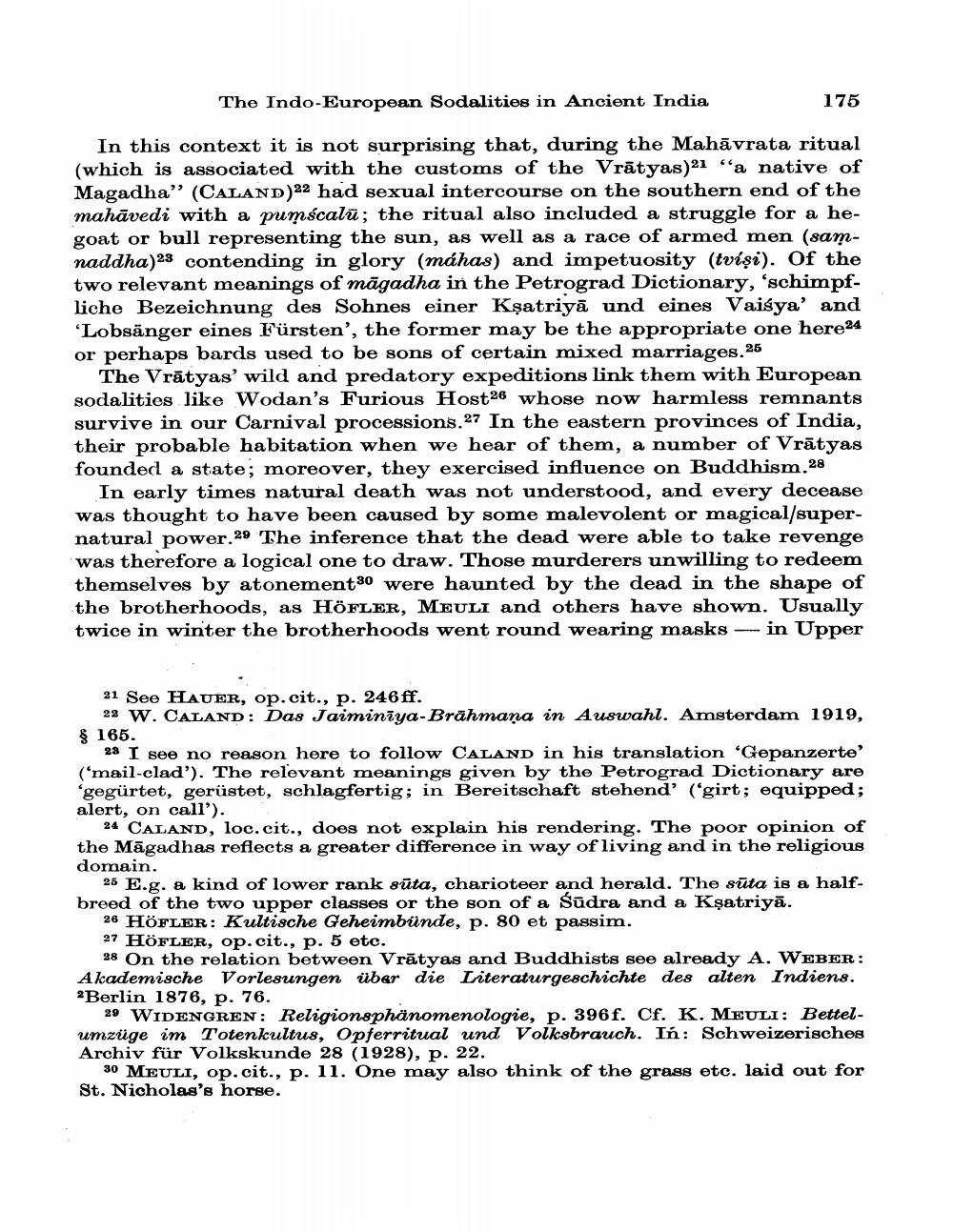Book Title: Indo European Sodalities In Ancient India Author(s): W B Bollee Publisher: W B Bollee View full book textPage 4
________________ 175 The Indo-European Sodalities in Ancient India In this context it is not surprising that, during the Mahāvrata ritual (which is associated with the customs of the Vratyas) "a native of Magadha" (CALAND)22 had sexual intercourse on the southern end of the mahāvedi with a pumscala; the ritual also included a struggle for a hegoat or bull representing the sun, as well as a race of armed men (samnaddha) contending in glory (máhas) and impetuosity (tvisi). Of the two relevant meanings of magadha in the Petrograd Dictionary, 'schimpfliche Bezeichnung des Sohnes einer Kṣatriya und eines Vaisya' and 'Lobsänger eines Fürsten', the former may be the appropriate one here24 or perhaps bards used to be sons of certain mixed marriages.26 The Vratyas' wild and predatory expeditions link them with European sodalities like Wodan's Furious Host 26 whose now harmless remnants survive in our Carnival processions. 27 In the eastern provinces of India, their probable habitation when we hear of them, a number of Vrätyas founded a state; moreover, they exercised influence on Buddhism.28 In early times natural death was not understood, and every decease was thought to have been caused by some malevolent or magical/supernatural power.29 The inference that the dead were able to take revenge was therefore a logical one to draw. Those murderers unwilling to redeem themselves by atonement 30 were haunted by the dead in the shape of the brotherhoods, as HöFLER, MEULI and others have shown. Usually twice in winter the brotherhoods went round wearing masks in Upper 21 See HAUER, op. cit., p. 246ff. 22 W. CALAND: Das Jaiminiya-Brāhmaṇa in Auswahl. Amsterdam 1919, § 165. 23 I see no reason here to follow CALAND in his translation 'Gepanzerte' ('mail-clad'). The relevant meanings given by the Petrograd Dictionary are 'gegürtet, gerüstet, schlagfertig; in Bereitschaft stehend' ('girt; equipped; alert, on call'). 24 CALAND, loc. cit., does not explain his rendering. The poor opinion of the Magadhas reflects a greater difference in way of living and in the religious domain. 25 E.g. a kind of lower rank sūta, charioteer and herald. The sūta is a halfbreed of the two upper classes or the son of a Śūdra and a Kṣatriyā. 26 HÖFLER: Kultische Geheimbünde, p. 80 et passim. 27 HÖFLER, op. cit., p. 5 etc. 28 On the relation between Vratyas and Buddhists see already A. WEBER: Akademische Vorlesungen über die Literaturgeschichte des alten Indiens. 2Berlin 1876, p. 76. 29 WIDENGREN: Religionsphänomenologie, p. 396f. Cf. K. MEULI: Bettelumzüge im Totenkultus, Opferritual und Volksbrauch. In: Schweizerisches Archiv für Volkskunde 28 (1928), p. 22. 30 MEULI, op. cit., p. 11. One may also think of the grass etc. laid out for St. Nicholas's horse.Page Navigation
1 2 3 4 5 6 7 8 9 10 11 12 13 14 15 16 17 18 19 20
